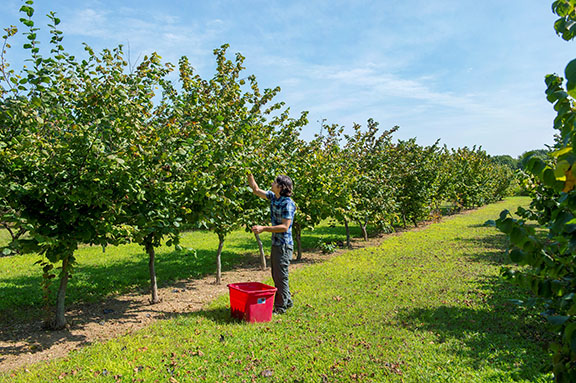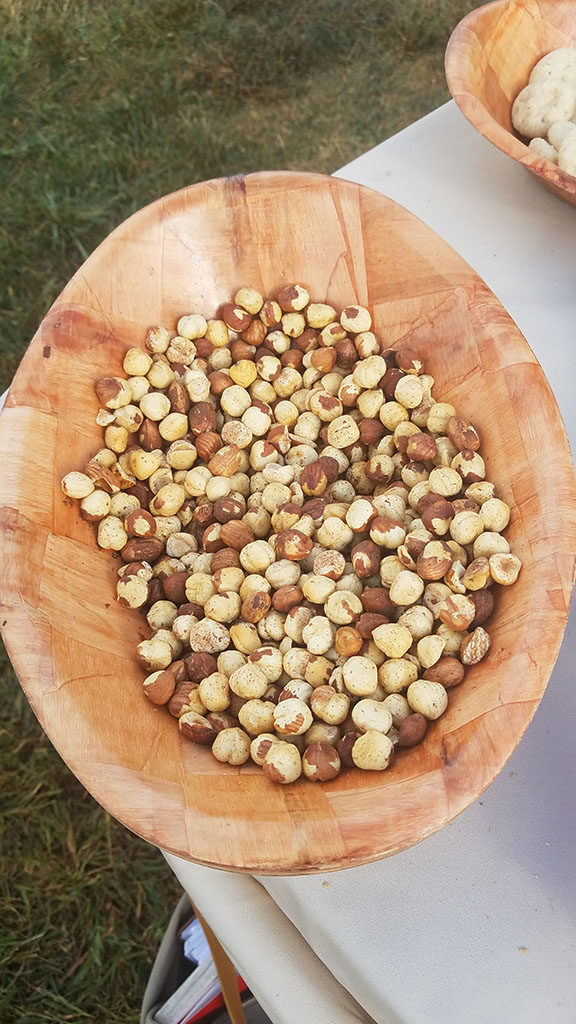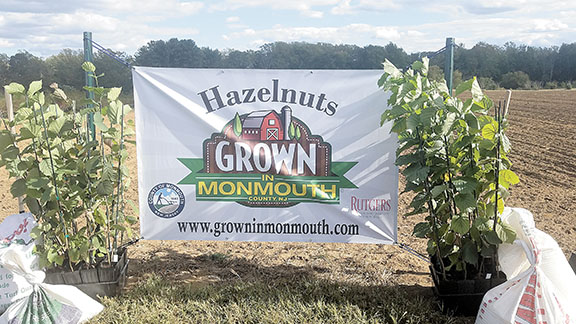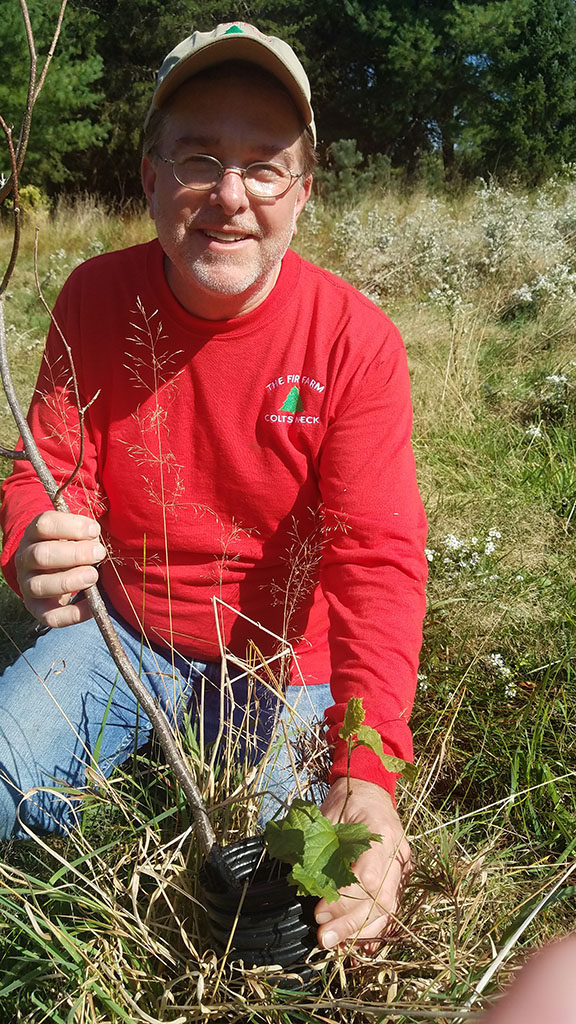
Photo courtesy Rutgers
By Gretchen C. Van Benthuysen
For a small state, New Jersey has a big reputation when it comes to – shall we say – unusual food.
It’s known for pork roll, a cold Sloppy Joe deli sandwich, disco fries, Trenton tomato pies, the Fat Darrell (French fries, mozzarella sticks and chicken tenders) and numerous kinds of hot dogs with attitude.

Photo by Gretchen C. Van Benthuysen
But will those dubious delicacies be a match for the small, round hazelnut? Also called a filbert, the nut, until recently, could not be commercially grown east of Oregon due to the Eastern Filbert Blight, a fungus that attacks and kills hazelnut trees and the main reason why there’s limited production in eastern North America.
The hazelnut, a key ingredient in Nutella, has been quietly building a Jersey fan base with the help of Rutgers University’s Fruit and Ornamental Research Extension Center and the Grown in Monmouth County-run agricultural assistance group.
This fall, a Rutgers research farm in Cream Ridge will plant five acres with trees resistant to the blight, making it the first commercial hazelnut demonstration orchard east of Oregon.
Thomas Molnar, an associate professor in the plant biology department of Rutgers University School of Environmental and Biological Sciences in New Brunswick, has spent the past 20 years on research and development to find a way to make hazelnuts feel at home in the Garden State.
Working with Rutgers’ C. Reed Funk, a world-renowned pioneer in the field of turf grass, Molnar said they started wide, learned what did well here and put their efforts into that. They focused on walnuts, almonds, pecans, chestnuts and hazelnuts.
“Dr. Funk was looking for a hardy food crop that fit very well here,” Molnar said. “We were looking at it as sustainable food that was very healthy for humans and could be grown without a lot of chemicals.”
They eliminated almonds and walnuts due to cold temperatures and diseases, and pecan trees were giants, he said. Large trees take longer to mature, take up space, and harvesting the nuts requires hiring pickers.
“Hazelnuts really stood out as the target,” he said.
“They had a shorter breeding time and they’re a smaller plant, about the size of a peach tree, can be vacuumed up, so easier to work with.”
“It was a coincidence of events that hazelnuts became super popular,” Molnar said. “We could see all the different products and spreads. It was just amazing.”
And then they got lucky.
About 70 percent of all hazelnuts come from Turkey where they are grown on small farms. Much of the harvest is used in confections such as the Nutella chocolate-hazelnut spread made by Ferrero, an $8.8 billion dollar company that uses 25 percent of the world’s crop and has a large factory in Ontario, Canada. The nuts are also often used in candy bars and other chocolates.
“This will help small farms to diversify what they grow,” Molnar said. “Hazelnuts are high value and since they are not available in the Eastern U.S., this gives us a chance to capture the market.”

Photo by Gretchen C. Van Benthuysen
That’s where the Grown in Monmouth program comes in.
“Now we start the commercialization,” explained John Ciufo, executive director of economic development for the county. “We start to supply this hazelnut’s potential crop to our growers and growers outside of Monmouth County.”
Rutgers also added people to its team to help with the commercialization, Ciufo said, and they will get more involved.
“We have local markets to develop,” he said. “We have about 20 local growers who are interested.”
Two of those local farms include Fir Farm, 166 Hillsdale Road, Colts Neck, and Capelli Farms, 1537 W. Front St., Lincroft.
Brothers Bob and Mickey Clark’s Fir Farm is expected to plant 80 pollenizer trees this fall on a half acre and 80 clonal trees next fall, which include four new cultivars Rutgers created called Monmouth, Raritan, Somerset and Hunterdon.
They also plan to use the nuts, as well as other ingredients from the farm such as wild yeast, hops, berries, bark (for taste and color) and leaves in a farm brewery.

Photo by Gretchen C. Van Benthuysen
Andy Capelli is unsure how many trees will be available to him, but hopes to eventually devote five acres to the nuts, which he plans to sell wholesale to local restaurants and bakeries. In addition to his 10-acre Lincroft farm, he said he also rents and cultivates local land. Eventually he may sell hazelnut trees, he said.
But there’s a lot more to growing the trees than just sticking them in the ground.
For instance, the trees are hermaphrodites, meaning they have both male and female flowers on the same tree, so a tree can’t set nuts with its own pollen. Trees must be wind pollinated so there must be a compatible pollenizer tree for effective pollination.
“Rutgers offspring trees are cold hardy, contain genes for Eastern Filbert Blight resistance, have relatively good nuts (although they will be variable since each plant is genetically different) and produce an abundance of pollen for the clonal trees next year,” Molnar explained.
The fields must be planted following a layout plan requiring one clonal to one seedling pollenizer. But the seedling pollenizers are planted twice as close in the specific pollenizer rows. That helps create a pollen cloud that fertilizes the clonal trees.
And it’s not just farmers that will go “nuts” over the trees.
“Monmouth County and Rutgers have a unique opportunity to not only cultivate this new crop on the East Coast, but also revitalize the Rutgers Cream Ridge Research Extension Center,” said Freeholder Lillian G. Burry, liaison to the Board of Agriculture and Rutgers Cooperative Extension. “In addition to county growers, the Future Farmers of America, County 4-H members and Master Gardeners will be able to utilize the orchard and facility for hands-on, learning experiences.”














